A Personal Cutting Garden That You Can Eat, Too!
May 26th, 2014
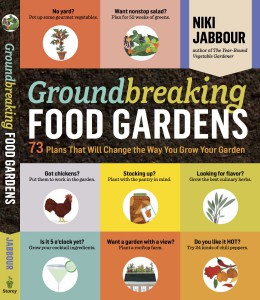 This just in: A New Kind of Hors d’Oeuvre
This just in: A New Kind of Hors d’Oeuvre
When entertaining, Debra recommends impressing your guests by gathering edible flowers and food from her garden plan to craft a simple, but unique amuse-bouche. The guests can snack on the centerpiece before the main meal is served – but only if your garden is organic!
I owe an (edible) bouquet of thanks to fellow garden writer Niki Jabbour for including my “Edible Cutting Garden” plan in her new book Groundbreaking Food Gardens (Storey Publishing, 2014). Along with planting plans and designs contributed by 72 others, this is an inspiring reference book that will change the way home gardeners thank about growing food.
Here’s a sneak peek of the pages featuring my project, and some ideas for how to incorporate edibles into your floral designs.
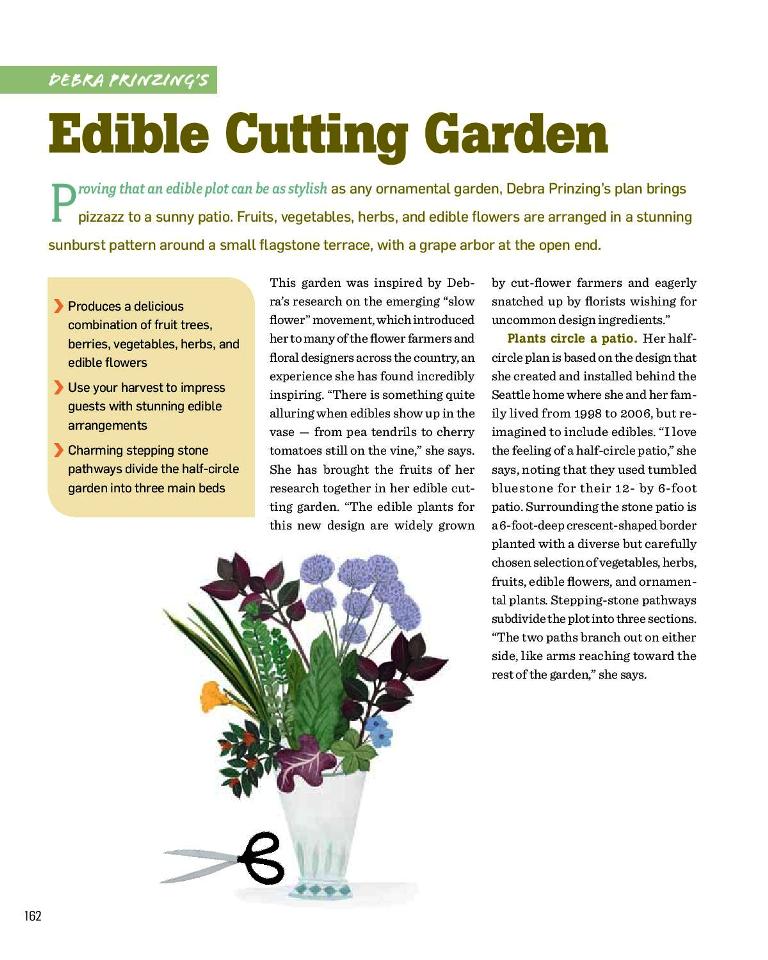
Debra Prinzing’s Edible Cutting Garden — a half-circle design based on an ornamental garden I created in Seattle, circa 1998-2006.
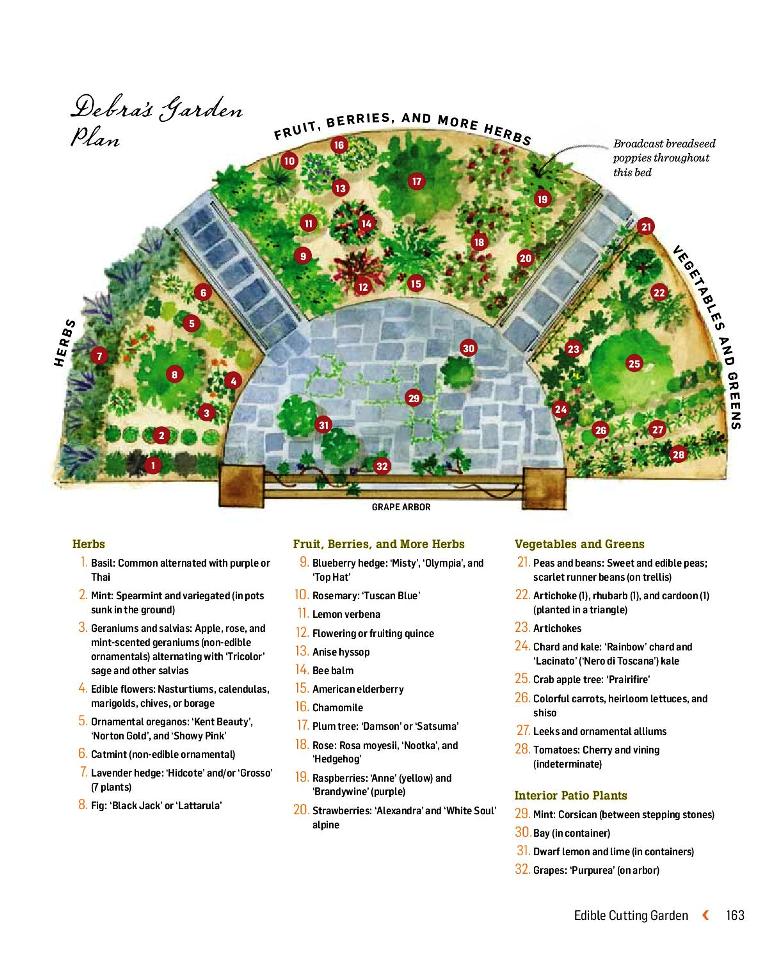
Each section features different edible categories — from herbs to fruits/berries to veggies and more.
This garden shown above was based on a design I made and installed behind the Seattle home where we lived from 1998 to 2006. I love the feeling of a half-circle patio. This one is paved in tumbled bluestone and measures about 12 feet wide by 6 feet deep. Two paths branch out on either side, like arms reaching toward the rest of the garden. The paths divide the 6-foot-deep crescent border into three sections.
When originally planted the garden was purely ornamental, a focal point from the huge covered porch off of our kitchen and family room. This time, I’ve imagined the half-circle as an edible-flower cutting garden with plants that are both beautiful and tasty.
There has been a proliferation of edible gardens that can feed a family year-round or satisfy a foodie’s diverse menu. Like most home chefs, I applaud this phenomenon and the exciting selection of seeds and veggie and herb starts available for the small-scale kitchen garden.
But don’t forget the benefits of growing ornamentals, especially those that feed the eye as well as the palate.
My new inspiration comes from the flower farmers and floral designers I’ve met over the past four years I spent reporting on the emerging “slow flower” movement. Many of these folks are featured in The 50 Mile Bouquet: Seasonal, Local and Sustainable Flowers, which was photographed by David Perry and published in 2012 by St. Lynn’s Press.
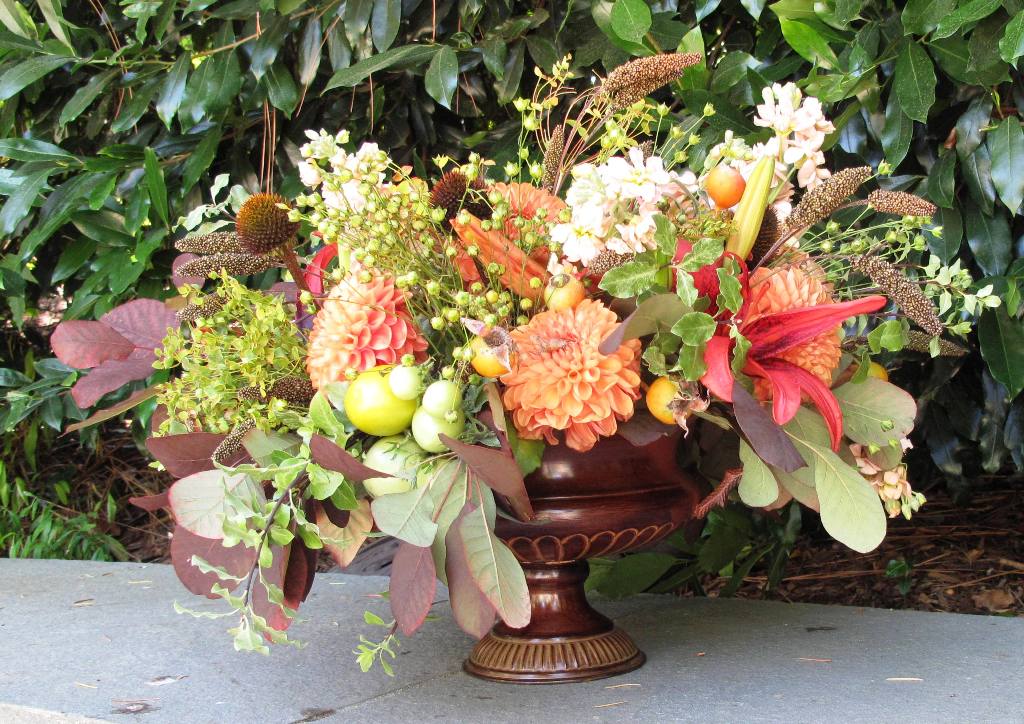
As a final touch to this luscious, late summer arrangement, I added some yellow pair tomatoes on the vine. Tucked betwen two dahlias, they are a perfect grace note from the garden to the vase.
The edible plants for this new design are widely grown by cut flower farmers and eagerly snatched up by florists wishing for uncommon design ingredients. There is something quite alluring when edibles show up in the vase — from pea tendrils to cherry tomatoes still on the vine. You can turn your centerpiece into an amuse-bouche offering for guests to snack on before the main meal is served (but only if your garden is organic!).
SECTION ONE: HERBS
Lavender hedge: Lavandula angustifolia ‘Hidcote’ and/or L. x intermedia ‘Grosso’ (7 plants)
Fig tree: Ficus ‘Black Jack’ or F. ‘Lattarula’
Six rows of herbs:
Row 1. Common basil, with plants alternating with purple basil or Thai basil
Row 2. Mint, with common, spearmint and variegated forms (sink potted plants in the ground to prevent running)
Row 3. Scented geranium plants, including apple, rose and mint; alternate with a variety of salvias, including tricolored sage.
Row 4. Edible flowers, including nasturtiums, calendula, marigold, chives and borage
Row 5. Ornamental oregano, including Origanum rotundifolium ‘Kent Beauty’, golden (Origanum ‘Norton Gold’) and showy pink (Origanum sipyleum)
Row 6. Catmint (Nepeta x faassenii) – not edible, but is beautiful as “edging”; plus, it attracts pollinators and is great as a cut flower ingredient
SECTION TWO: HERBS, BERRIES AND FRUIT – mixed border
Blueberry hedge: Choose varieties with interesting foliage; may be evergreen in milder climates. I like ‘Misty’, which has blue-green foliage. Other great varieties include ‘Olympia’, and ‘Tophat’. Cut for the bouquet when in fruit.
Strawberry border: Choose white and red Alpine varieties, such as Fragaria vesca ‘Alexandra’ or F. v. ‘White Soul’.
Plum tree: Choose a small variety, such as Prunus x domestica ‘Damson’ or ‘Satsuma’
Fruiting shrubs: Raspberries (2), Quince (1) and Elderberry (1); Suggested raspberries include ‘Anna’, with apricot-gold berries and ‘Brandywine’ with purplish berries. Flowering quince (Chaeonomeles sp.) can produce some fruit and is typically smaller than the fruiting quince (Cydonia oblonga) used for jams, jellies and sauces. The American elderberry (Sambucus canadensis), produces attractive foliage, flowers and fruit. Be sure to select an edible form of elderberry, because some varieties can be harmful if ingested raw in large quantities.
Flowering shrubs: Roses, especially varieties known for producing beautiful hips (3). Rosa nutkana, Rosa moyesii and Rosa rugosa are all valued for hips.
Herbs: Rosmarinus officinalis ‘Tuscan Blue’ (1); lemon verbena (Aloysia citrodora) (1); anise hyssop (Agastache foeniculum) (1); bee balm (Monarda didyma) (1); chamomile (Matricaria recutita)(1); and feverfew (Tanacetum parthenium) (1)
Flowers: Broadcast bread-seed poppies (Papaver somniferum) throughout this bed. You can save the seed from year to year. Dried seed heads are beautiful in floral arrangements.
SECTION THREE: VEGETABLES AND GREENS
Crabapple tree: Fruiting branches are valued by floral designers and can also be used in cooking. Choose varieties that produce beautiful spring flowers and pretty fall fruit, such as Malus x ‘Prairifire’.
Six rows of veggies and greens:
Row 1. Cherry and vine tomatoes
Row 2. Leeks and ornamental alliums
Row 3. Colorful carrots, heirloom lettuces and shiso (Perilla frutescens)
Row 4. Rainbow chard and dinosaur kale (‘Nero di Toscana’ or ‘Lacinato’)
Row 5. In this triangle-shaped section, plant one artichoke, one rhubarb and one cardoon. Their leaves are dramatic in arrangements and they need extra space to grow.
Row 6. Five-foot tall trellis for sweet peas, edible peas and scarlet runner beans
PATIO AND PATHS
Groundcovers: Establish between stepping stones: Corsican mint, Corsican violet and various creeping thymes are all edible.
Pots: Dwarf lemon, dwarf lime and bay tree – all can be brought indoors in winter, if needed. You can use the flowering branches and fruit of the citrus trees. Two new varieties of dwarf Calamondin, with small orange fruit ideal for drinks, marmalades and dressings, are fun to try (check out the one with variegated foliage – a perfect bouquet accent).
Arbor: Purple grape vine (Vitis vinifera ‘Purpurea’)
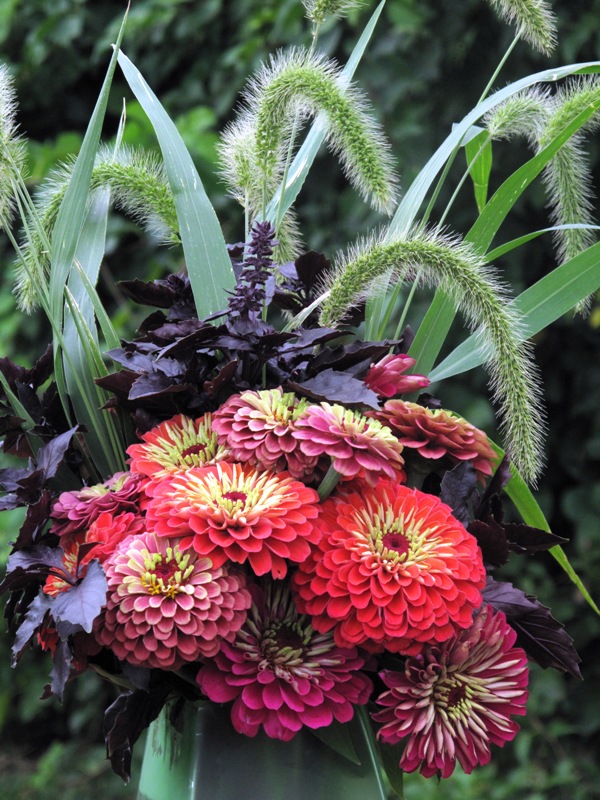
In this design I created for a Better Homes & Gardens photo shoot, I paired dark-purple Thai basil with Queen Red Lime zinnias and some wild-looking foraged grasses.
Harvesting and design tips:
- When used as a floral design element, all fruit (berries, plums, apples, figs) and vegetables (tomatoes, artichokes) should be harvested when unripe. This will ensure that the edible portion stays on the stem, branch or vine for the duration of the bouquet’s life. I like to pick when the first blush of color appears. Remove most of the leaves to highlight the fruit.
- Use salad greens, chards, kales and herbs for foliage. Like any floral design element, strip off any part of the foliage from the portion of the stem that’s under water.
- Use scented ingredients to add an element of surprise: Citrus blossoms, scented geranium foliage, herbs and flowering branches can infuse a bouquet with fragrance
- When harvesting flowers, cut them when they are partially open. Most will continue to open when in an arrangement, extending the beauty of the bloom.
- Use hips, pods and petal-less flower heads to enhance end-of-season bouquets.









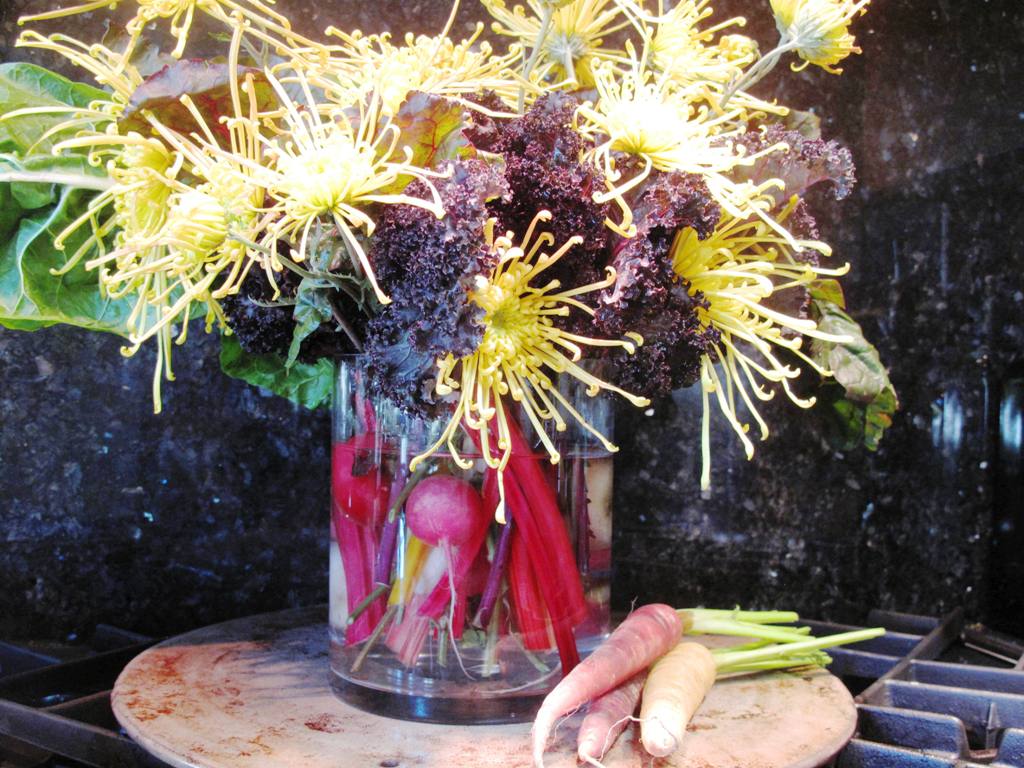
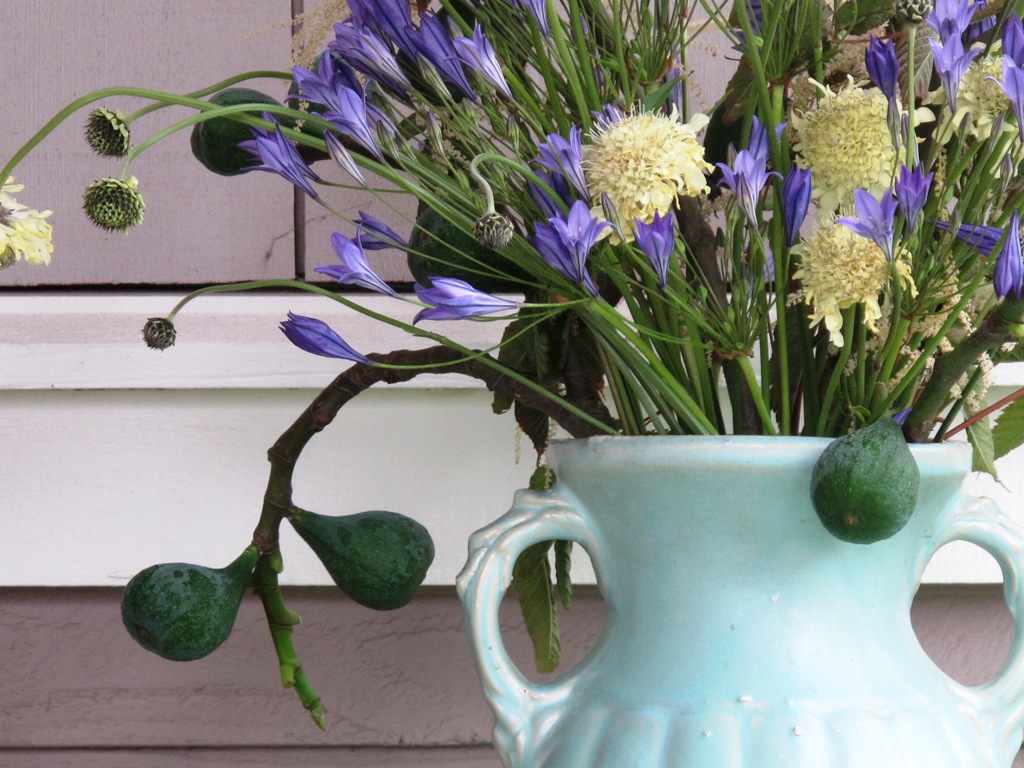
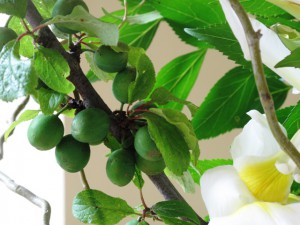
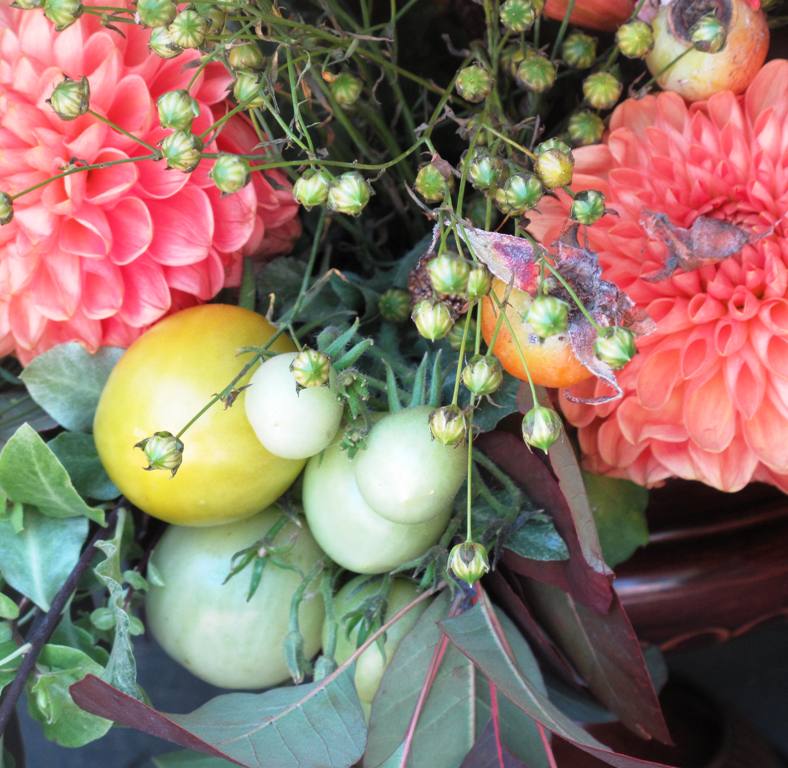
May 26th, 2014 at 10:18 am
Love this idea for my edibles and love the layout. I’ll be saving this. Thanks, Deb.
May 27th, 2014 at 10:32 am
There’s nothing better than a salad of field greens dressed with walnuts and edible This is the best overall picture of edible flowers and how to use them that I have seen.
Any favorite recipe to share?